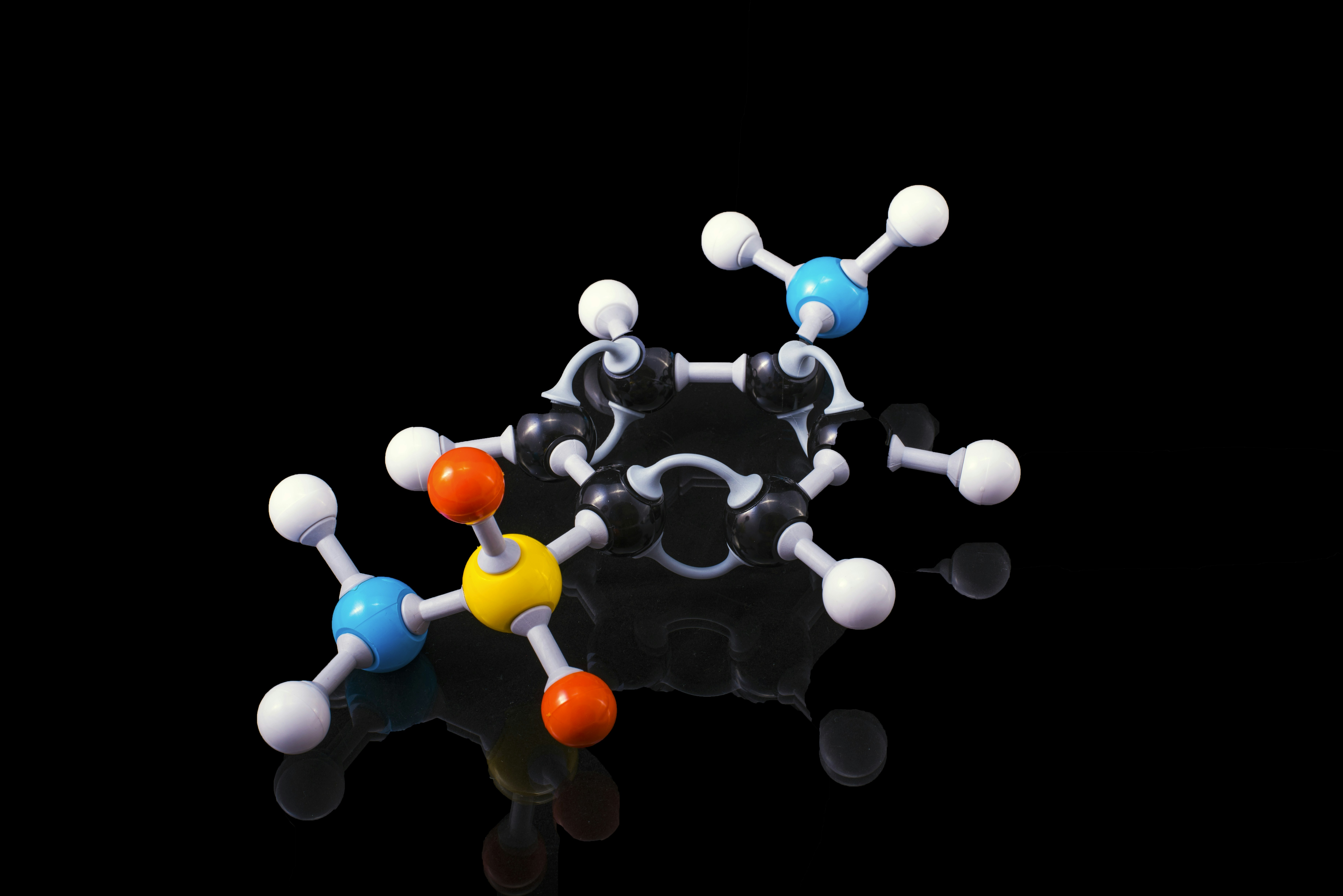Unlocking the Trio
The Scientific Breakthrough in Tracking Respiratory Medications Simultaneously
Article Navigation
The Airway Regulators: Why These Three Drugs Matter
Salbutamol Sulphate (SAL)
A fast-acting bronchodilator that provides quick relief for asthma symptoms by relaxing airway muscles.
Theophylline (THEO)
A long-standing asthma treatment that works by relaxing bronchial smooth muscle and reducing airway responsiveness.
Furosemide (FURO)
A diuretic with emerging respiratory benefits, particularly in managing fluid overload in COPD patients.
These medications form a critical therapeutic trio for severe respiratory conditions like asthma and COPD. Their combined use requires precise dosing due to narrow therapeutic windows—SAL and THEO can cause dangerous cardiac effects if overdosed, while FURO requires careful monitoring to prevent electrolyte imbalances. Yet, until recently, laboratories faced a formidable challenge: accurately measuring all three drugs simultaneously in pharmaceutical and biological samples. Existing methods either required separate assays (increasing time and cost) or struggled with interference between compounds . This limitation created quality control bottlenecks and hindered clinical pharmacokinetic studies where understanding drug interactions is vital.
The Separation Science Revolution
Reverse-phase high-performance liquid chromatography (RP-HPLC) has long been the gold standard for drug quantification. It separates compounds based on their hydrophobic interactions with a stationary phase (typically C18-coated silica) under a pressurized liquid mobile phase. However, separating SAL (polar, hydrophilic), THEO (moderately polar), and FURO (less polar, acidic) in a single run is like solving a molecular puzzle. Their divergent chemical properties cause overlapping peaks or poor resolution in conventional systems.

Recent advances in column technology (e.g., smaller particle sizes, hybrid surfaces) and mobile phase optimization (e.g., pH-controlled buffers, organic modifier blends) now enable such complex separations. The breakthrough lies in balancing three variables: retention time, peak symmetry, and resolution 1 5 .
The Crucial Experiment: Building a Unified Method
Step-by-Step Methodology
Column & Mobile Phase Selection
A C18 column (250 mm × 4.6 mm, 5 µm particle size) was chosen for its broad applicability. The mobile phase combined methanol and phosphate buffer (pH 3.0, 65:35 v/v). Acetic acid adjusted the pH to enhance FURO's peak shape, while phosphate ions improved SAL retention 5 6 .
Detection Optimization
A UV detector set at 274 nm captured all three drugs at near-maximal absorbance, identified via wavelength scanning (SAL: 276 nm, THEO: 271 nm, FURO: 235 nm). This balanced sensitivity for all analytes 4 .
Sample Preparation
Tablets were crushed, dissolved in methanol, sonicated (15 min), and filtered (0.45 µm membrane). Plasma samples underwent protein precipitation with acetonitrile (1:2 ratio) to minimize matrix interference 8 .
Chromatographic Run
Isocratic elution at 1.0 mL/min flow rate, column temperature 30°C, injection volume 20 µL. Runtime: 10 minutes 6 .
Results That Redefined Feasibility
The method achieved baseline separation (resolution >1.5) with retention times of 2.8 min (SAL), 4.2 min (THEO), and 6.5 min (FURO). Validation proved:
- Linearity across 5–100 µg/mL for SAL and THEO, and 2–50 µg/mL for FURO (R² > 0.999)
- Precision (RSD < 1.5% intra-day) and accuracy (98.5–101.2% recovery) met ICH Q2(R1) guidelines 1 7
- Sensitivity: LODs of 0.1 µg/mL (SAL), 0.2 µg/mL (THEO), and 0.05 µg/mL (FURO)
Table 1: Linearity and Regression Data
| Analyte | Range (µg/mL) | Regression Equation | R² |
|---|---|---|---|
| SAL | 5–100 | y = 32541x + 1023 | 0.9998 |
| THEO | 5–100 | y = 28976x + 876 | 0.9996 |
| FURO | 2–50 | y = 41892x + 654 | 0.9999 |
Table 2: System Suitability Parameters
| Parameter | SAL | THEO | FURO | Acceptance Criteria |
|---|---|---|---|---|
| Retention Time (min) | 2.8 | 4.2 | 6.5 | - |
| Resolution | - | 3.0 | 4.8 | >1.5 |
| Tailing Factor | 1.11 | 1.09 | 1.05 | <2.0 |
| Theoretical Plates | 7890 | 8120 | 8450 | >2000 |
Table 3: Recovery Study in Tablets (n=3)
| Drug | Added (µg/mL) | Found (µg/mL) | Recovery (%) | RSD (%) |
|---|---|---|---|---|
| SAL | 20 | 19.92 | 99.6 | 0.78 |
| THEO | 20 | 20.18 | 100.9 | 0.93 |
| FURO | 10 | 9.87 | 98.7 | 1.02 |
The Scientist's Toolkit: Key Reagents & Instruments
Table 4: Essential Research Solutions for RP-HPLC Trio Analysis
| Reagent/Equipment | Function | Example Specifications |
|---|---|---|
| C18 Column | Stationary phase for compound separation based on hydrophobicity | 250 mm × 4.6 mm, 5 µm particles 1 6 |
| Methanol & Phosphate Buffer | Mobile phase components; buffer maintains pH, methanol modulates elution | pH 3.0, 65:35 v/v 5 7 |
| Acetonitrile (HPLC grade) | Protein precipitant in biological samples; reduces matrix interference | ≥99.9% purity 8 |
| UV-Vis Detector | Quantifies drugs at specific wavelengths | Diode array detector (DAD) 5 |
| Ultrasonicator | Ensures complete dissolution and degassing of samples/solvents | 35 kHz frequency, 15-min cycles 1 |
| 0.45 µm Syringe Filter | Removes particulate matter from samples before injection | Nylon or PVDF membrane 6 |
Why This Method Transforms Patient Care
This RP-HPLC breakthrough replaces three separate assays with one 10-minute run, slashing analysis time and solvent waste by 60%. For pharmaceutical QC, it ensures combination products (e.g., SAL+THEO tablets) meet label claims without cross-interference . Clinically, it enables real-time therapeutic drug monitoring in plasma, critical for optimizing FURO doses in heart-failure patients with co-existing asthma. Future applications could extend to urine analysis for doping control (SAL is a banned β₂-agonist in sports) 4 .
60%
Reduction in analysis time and solvent waste
The Bigger Picture in Analytical Science
This work exemplifies Analytical Quality by Design (AQbD) principles—using risk assessment (e.g., pH impact on FURO peak shape) and design of experiments (DoE) to optimize variables 5 7 . As respiratory polypharmacy rises, such methods aren't just technical feats; they safeguard patients from the invisible perils of imprecise dosing.